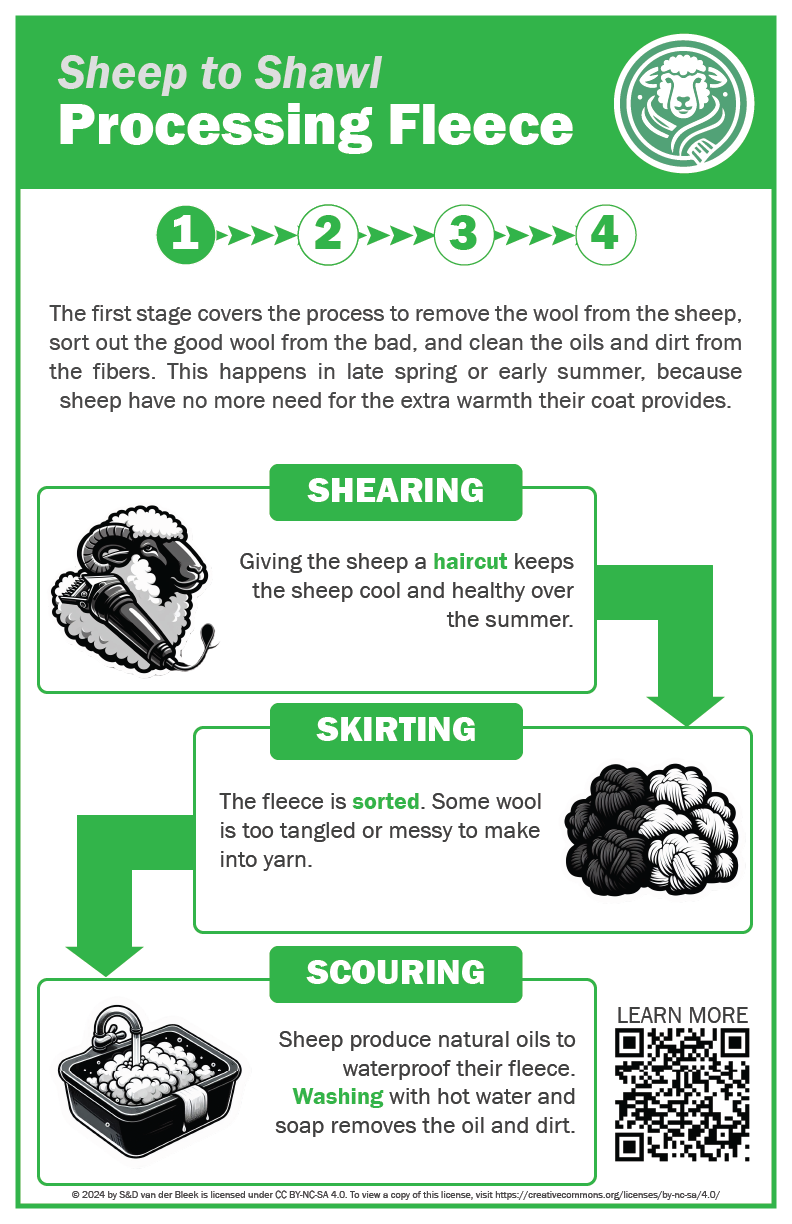Step 1: Processing Fleece

The first set of steps cover the process to remove the wool from the sheep, sort out the good wool from the bad, and clean the oils and dirt from the fibers. This process begins in late spring or early summer, once the sheep have no more need for the extra warmth their coat provides.
Shearing
Wild sheep naturally shed their fleeces, but most domesticated breeds require shearing to remove the wool. Shearing is just like getting a haircut – and removing the heavy (and hot!) wool is important to keep the sheep healthy over the summer. The wool will grow back in time to keep them warm and dry through the winter.
Skirting
The fleece contains sections that are much too dirty or tangled to continue the rest of the process with. The fleece is skirted – sorted so that the clean wool can be utilized to make garments, and the dirtiest wool can be composted. Some people like to sort the wool by color, or by which part of the sheep it came from!
Scouring
Even the cleanest parts of the fleece contain oils and dirt. Oils, like lanolin, help waterproof the fleece and keep the sheep dry. The oils are sticky, and collect dirt and vegetable matter (VM). We scour the fleece to remove the oils and dirt. This is a very hot bath with lots of special cleaners – care has to be take not to tangle the wool, or otherwise damage it. Often up to half the fleece weight is oil and dirt!